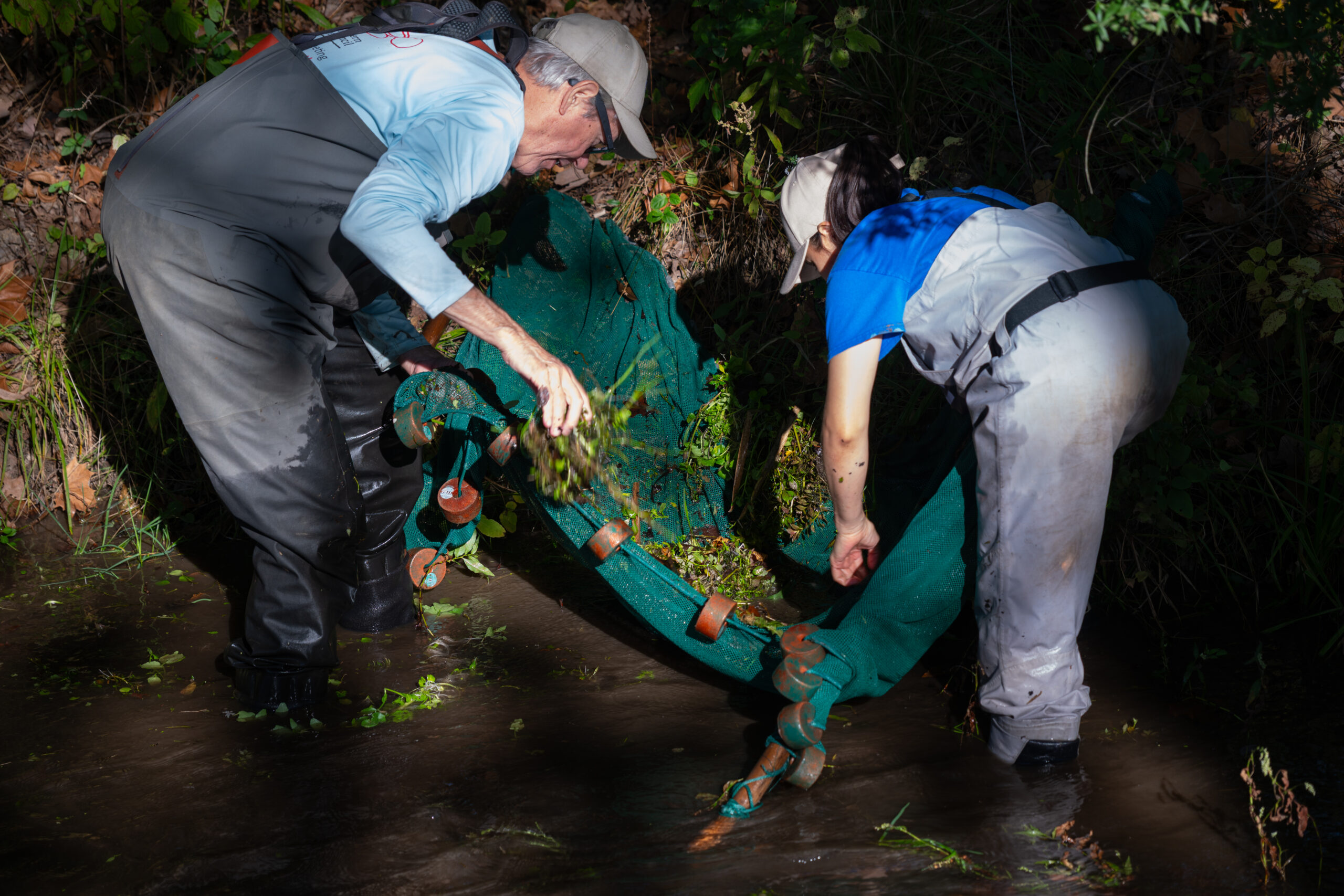
In October, we held our most successful Endangered Species Tour (EST) yet, with 40 participants joining us for this staff favorite event! The EST gave participants the chance to observe the tiny, precious darter fish up close, and they got to hear from some of the most valuable voices in conservation in the Birmingham area.

Charlie Scribner, Executive Director of Black Warrior Riverkeeper, helped us start the day at the Seven Springs EcoScape across from Faith Apostolic Church, one of the six locations where the watercress darter (etheostoma nuchale) is found. This particular population was discovered in 2001 by Dr. Mike Howell and Dr. Larry Davenport. In preparation for the EST, Scribner interviewed Dr. Howell, reciting the interview for attendees and describing, in Dr. Howell’s words, the “biological high” that came from discovering the watercress population here nearly 25 years ago. Since that time, protecting the darter at this location has truly been a team effort. The late Bishop Heron Johnson felt a sense of responsibility for the darters here, stating, “God has placed that fish in our springs for a purpose and we are going to protect it.” [Read Scribner’s full interview with Dr. Howell here.]

We thought we would have our opportunity to see the recently-identified Birmingham darter (Etheostoma birminghamense) would be saved for our last stop, a FLT conservation easement on Nabors Branch just downstream of this location, so we were delighted when our seining team scooped one up for the first time at the EcoScape! This species, along with the Gurley darter and vermilion darter, are in a group of snub-nosed darters that share common ancestry from about 5 million years ago, researchers say. Our observations at this site gave us all a good dopamine boost to ride for the rest of the tour!
Dr. Scot Duncan (Alabama Audubon) may be a bird expert, but, as he points out, “fishes are the birds of the aquatic landscape.” He related the current rapid decline in bird populations to the decrease in darter fish, and Roebuck Springs was the perfect place to make that point. At this location in 2008, a beaver dam was removed by the City of Birmingham. U.S. Fish and Wildlife Service (USFWS) notes that this decision resulted in the death of over half (11,760) of the largest known populations of darter fish. Subsequent litigation led to $3 million in funds being attributed to Freshwater Land Trust to manage for the restoration of the habitat here. We have since partnered with USFWS and others to complete a streambank restoration, removal of a concrete dam, sediment removal, planting of native vegetation, and adding of bioswales. Though we may never regain the numbers lost here, we know we are doing everything we can to maintain a healthy habitat for the darters at this site.

Our next stop was one participants found most surprising; a spring on the side of Highway 79. Here, you find a shallow, cool stream that the rush and vermillion darter favor, just beneath a busy four-lane highway. This stop is certainly the one that demonstrates the delicate line these species toe to survive; due to urbanization, their population is limited to three watersheds, and, in all three, the threat of pollution looms. Dylan Shaw, a biologist with Alabama Power, was the rush darter’s (Etheostoma phytophilum) champion for this tour. He impressed upon guests his admiration of the species for its persistence despite its perilous environment.

During our lunch at Turkey Creek Nature Preserve, we heard from Charles Yeager with Jeffco Greenways, whose conservation efforts at Turkey Creek, Red Mountain Park, and Ruffner Mountain Nature Preserve are similar to ours with their focus on stewardship and biodiversity. We also heard from Tyler Sibley with the Alabama Forestry Association about its role in education, sustainability, and regulation in the forestry industry.
The last two sites of the day were located on FLT private conservation properties, where we could show attendees examples of our habitat and stream restoration work. We first stopped at Turkey Creek CU2, where we’ll soon undertake a project with Wilbanks Engineering and Environmental Solutions to address erosion, reduce sedimentation, and mitigate flood risk. Stay tuned! We concluded the tour just across from where we started at Seven Springs. Here, FLT holds a conservation easement and has done continuous restoration work over the past few years, including a stream restoration project to improve fish passage for the watercress darter, targeting invasive vegetation, and removing a significant amount of trash from the property. We got our last looks at the Birmingham and watercress darters and released them with the promise to be steadfast in our continuous efforts to protect them.
Thank you so much to all of our speakers for offering their unique insights and for being partners in the conservation of these important habitats. We would also like to thank Dr. Bernie Kuhajda and his team from the Tennessee Aquarium Conservation Institute as well as our good friend, Jeffrey Drummond. Additionally, we thank National Fish and Wildlife Foundation, Alabama Forestry Foundation, and Alabama Sustainable Forestry Initiative Committee for providing lunch and transportation, and Punch Love Coffee for caffeinating the tour.

